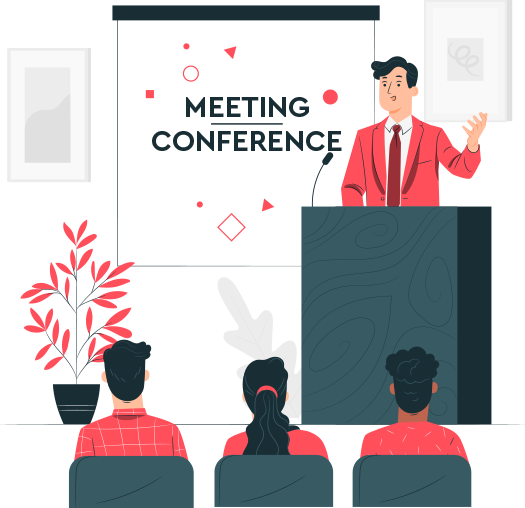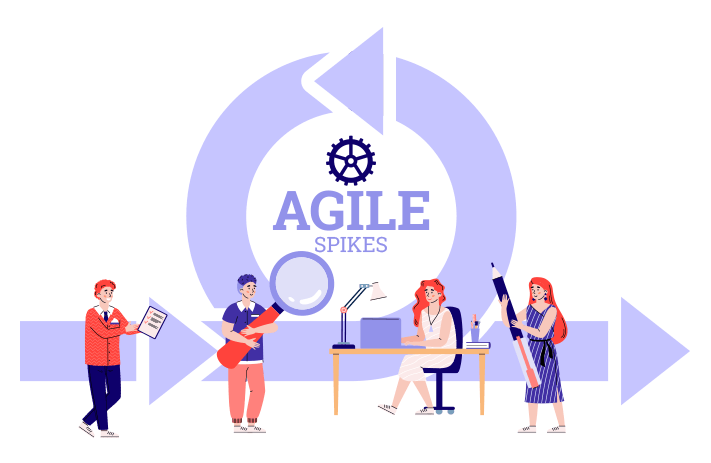
Click the button to start reading
7 Effective Ways To Run a Highly Successful Meeting
Regular meetings play a large part in how a team comes together to problem-solve, appreciate one another’s contributions, and make aligned decisions.
However, if a meeting is not run well, it can have lasting effects on employee motivation and productivity.
As leaders of these meetings, it’s important to understand what causes bad meetings, the long-term effects it can have on everyone involved, and how to expertly conduct the discussion in a way that saves time and boosts morale.
What Are The Causes of a Bad Meeting?
When a team has an unproductive meeting, everyone in the room can feel it. The energy is low. Not everyone is engaged or interested in contributing meaningfully to the discussion. And as a result, it’s unclear whether the group came to a resolution. There are a number of reasons why meetings can become ineffective and a drain on valuable time and energy. According to SHRM.org, here are the most common meeting problems for employees.
- Starting or ending late – Starting a meeting late, or ending well after the allotted time, can set the tone for the rest of the meeting. Most people leave the conversation feeling like their time wasn’t respected.
- Unnecessary meetings – These are the meetings that could have been handled in an email or in separate conversations with the right people instead of unnecessarily pulling together the entire team.
- Too much time, not enough time – Understanding the purpose of the meeting is important in deciding how much time is needed to get efficient results.
- Employees appear distracted – This is a sign that some members of the team are not being engaged enough by the conductor of the meeting and are openly distracted by whatever else is around them.
- Employees interrupt each other – These are behaviors as a result of a poorly run meeting that eventually leads to tense arguments and awkward silences.
- Not sticking to an agenda or no agenda – A disorganized meeting makes everyone question the very purpose behind the conversation and why they’re even included in the first place.
- Employee/Facilitator not prepared – This makes a meeting appear sloppy, hastily put together, and unimportant.

What Are The Consequences of a Poorly Run Meeting?
Running an effective meeting means more than just keeping people focused on the topic. It’s about fostering the growth of an employee so they can fully step into their role and feel like a valued member of the team. Ultimately, it’s a key piece of the company’s culture.
But if the group is not set up for success, having consistently bad meetings can produce consequences that affect the individual, team, and even leadership.
Let’s take a look at the consequences of badly run meetings:
- Less time devoted to important tasks – More time is spent being in meetings rather than on actual work tasks, which can create a backlog on critical assignments.
- Disrupts workflow and concentration – Unnecessary meetings can break concentration and reduce productivity as a result of constant task switching. In fact, Meeting Recovery Syndrome refers to the period that employees need to mentally recover from a bad meeting.
- Increases burnout and frustration– Back-to-back meetings — especially with most of the world transitioning to a largely remote capacity — can lead to increased stress and exhaustion amongst participants, especially if the goals of the meetings are unclear and remain unresolved (Source: CNBC.com).
- Reveals dysfunction – Bad meetings can be a symptom of deeper issues within the company and its culture as it can be made abundantly clear who is doing more, who is doing less, etc. which creates feelings of resentment amongst the staff (Source: Forbes).
- Wastes money – On average, the U.S. spends about $37 billion on salary costs for unnecessary meetings (Source: Atlassian.com). This affects a company’s bottom line and its ability to have continued success.
7 Ways To Improve the Way We Run Our Meetings
Now that we understand how poorly run meetings can have a major impact on a company’s culture, work output, and employee morale, let’s dive into some of the most compelling methods that can help turn a bad meeting into one that engages and motivates.
Tip #1 To Run a Meeting Effectively: Know The Purpose of Your Meeting

A meeting has to have a single objective in mind, and the way towards this destination must be clear for everyone who is expected to contribute to the discussion. One of the best ways to plan a meeting is to first understand the difference between a meeting’s topic vs. its purpose.
According to Merriam Webster’s Collegiate Dictionary, a topic is defined as “the subject of a discourse.” Whereas the definition of a purpose is “something set up as an object or end to be attained.”
So, when we apply this to our internal meetings, we need to identify:
- What is the topic of discussion? For example, “Weekly check-in meeting” or “Discuss new workflow process.” As topics, these titles work just fine, but for the purpose of the meeting, they’re considerably vague. Your team is going to want more detail than just the name of the topic in order to be better prepared.
- What is the purpose of the meeting? The more specific we are with the end goal, the easier it will be to form an effective agenda. Using our prior example with “weekly check-in meetings”, the purpose of these particular meetings would be to come up with resolutions for each identified problem that employees find during the workweek.
Tip #2 To Run a Meeting Effectively: Remove Ambiguity
63% of meetings are still conducted without an agenda (Source: ReadyTalk.com). This means that most people come unprepared to their meetings and are unable to participate effectively. In order to run an efficient meeting, create a plan that paves the path towards the end goal. Putting together an agenda is a great way to set expectations and provides an opportunity to get ready for the discussion in advance.
According to the HR Daily Advisor, an agenda is critical for meetings as it avoids being an extra cost to a company’s resources when participants show up unprepared.

Agendas are beneficial for a few other key reasons:
- Saves valuable time
- Keeps everyone focused
- Gets the right people in the room
- Increases productivity
- Reminds the conductor of what else needs to be covered with the team
If the agenda is framed in questions, this could help zero in on who really needs to be there and what answers are needed.
After an agenda is created, circulate the materials a few days before the meeting to all the relevant individuals who are considered mandatory participants. Give them ample time to review the contents and ask any clarifying questions. This will also give the key players time to contribute to the agenda, leading to well-rounded and thoughtful talking points.
Tip #3 To Run a Meeting Effectively: Assign roles
Everyone should have a role. Not only does this ensure that everyone is actively engaged, but it also improves the dynamic of the meeting so that the entire team can get through the agenda in a timely manner.
There are four critical roles that should be present in every meeting:
- The Timekeeper – In this role, the Timekeeper will make sure that each action item is discussed within an allotted amount of time to keep the meeting going at a good pace. The leader of the meeting may be too busy facilitating to keep track of time.
- The Notetaker – Someone on the team should be dedicated to taking notes so that everyone can contribute without having to worry about missing any crucial details. Any conclusions or next steps as a result of the discussion will be routed to everyone at the end.
- The Participant(s) – These are the individuals presenting their expertise on the subject and any important insights that help the team arrive at a decision.
- The Leader – The leader is the facilitator and ensures that everyone is heard and has had a chance to speak and voice their thoughts. This role will also reiterate key points and conclude the meeting with clear next steps.
In order to get a better picture of how to run the meeting and get the best outcome, it’s important to know your team and their individual strengths.
Tip #4 To Run a meeting Effectively: Be a Good Host and Lead With Purpose

Because meetings are such an integral part of the workplace — on average 62 meetings are attended per month by most employees — it’s no wonder that bad meetings can have a significant impact on employee morale! (Source: Atlassian.com)
We strive to nurture an employee culture of compassion, respect, and honesty, yet we also want to cultivate a high-performing team that is solution-focused. This means that the way we run meetings must also reflect these values.
As the facilitator of the meeting, it’s your job to help everyone feel welcomed and appreciated from the beginning.
Once you have created an encouraging atmosphere, you can then establish clear rules and expectations for the rest of the meeting:
- State the purpose
- Do a quick, high-level overview of the agenda
- Be clear with the outcome that needs to be achieved
- Address how questions will be answered (whether that’d be at the end or throughout the meeting)
It’s also important to keep in mind that “COVID fatigue” has affected a large amount of the workforce. Virtual meetings have increased dramatically since the start of the pandemic. And as many companies consider a full transition into a fully virtual or hybrid workforce, “Zoom fatigue” can be a real issue as more people are left feeling even more exhausted and irritated than ever before.
Running a meeting during a pandemic means understanding that the participants will be experiencing a heavier cognitive load, according to Stanford News. They’ll be occupied with things that are normally absent during in-person meetings:
- Focusing on what they look like while they video conference
- Making more effort with nonverbal cues to communicate that you agree/disagree with something
- Misinterpreting nonverbal cues
- Staying in the same spot so that they’re centered in the video frame
- Trouble identifying where to look on the screen
While we still have many challenges to tackle when it comes to our virtual meetings, we can use this as an opportunity to practice leading with compassion and keeping the meetings concise.
Tip #5 To Run a Meeting Effectively: Make Timekeeping a Priority.

Start and end a meeting on time. Every meeting may have a few stragglers, but that doesn’t mean the meeting should be held until they arrive or waste precious time trying to catch everyone up on what they’ve missed.
This can be detrimental to the productivity of the group as it’s already off to a bad start or needs to be constantly interrupted.
Instead, plan to dedicate the first few minutes to an activity such as an ice-breaker or informal check-in so that everyone has a chance to speak and loosen up before they dive into the essence of the agenda. This will also provide a window for late-comers to settle in without missing vital information.
To save time as the meeting progresses, any off-topic items or questions that come up can be sidelined. Acknowledge that it’s an essential point to go over and will be evaluated for discussion at the next meeting.
End the meeting at its scheduled time by letting everyone know that you want to respect the time they reserved for this discussion and recap any conclusions. If you can even end the meeting early, the better!
Tip #6 To Run a Meeting Effectively: Conclude With Next Steps or a Clear Decision
As the meeting draws to a close, it’s important to open up the floor to the team:
- How is everyone feeling about the resolution or proposed next steps?
- Do they have any final questions or comments?
More than 35% of employees feel like they have nothing to show after wasting at least 2 to 5 hours in meetings per day, according to Otter.ai.
Use the last few minutes of the meeting as a way to optimize the entire time by clarifying key takeaways, responsibilities, action items, and what will follow afterward.
The goal is to have the team leave the meeting feeling accomplished and clear on the next steps.
Tip #7 To Run a Meeting Effectively: Evaluate Meetings

Gathering feedback on meetings is another way to intentionally include your team and gain valuable insight into how they’re going.
This is an opportunity to get a temperature check on what’s going well, what isn’t working, and what could be improved to fix any gaps in communication. The key here is to not take any criticism personally. It’s not a reflection of your abilities as a host or as a leader.
Based on their thoughts, you can then try new and creative ways of engaging the team, being clearer with your expectations, and refining your methods to run efficient meetings.
In Conclusion
Learning how to run a meeting is an essential skill that can foster an environment of high-performers within an organization. If not conducted well, it can have serious repercussions on productivity and motivation.
Using these tips that we’ve given you here, you can begin to assess the way you currently run your own meetings and implement new strategies to hone your processes…and grow the company with positive and focused momentum.
















